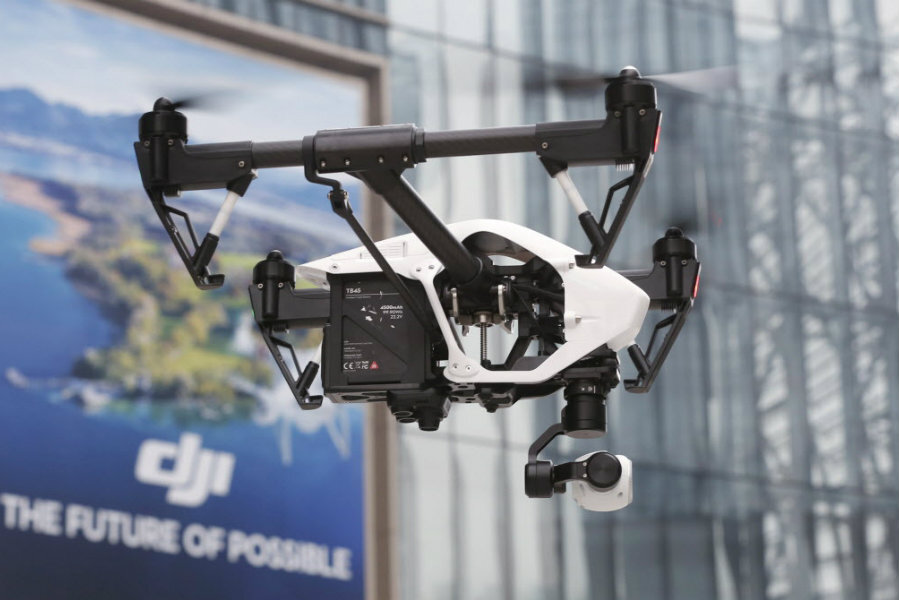What CNN’s drone agreement with the FAA means
Loading...
It’s another mark of the growing interest in drones and their potential: The Federal Aviation Administration has allowed CNN, in partnership with the Georgia Tech Research Institute, to explore the use of camera-equipped drones in news gathering.
"Our aim is to get beyond hobby-grade equipment and to establish what options are available and workable to produce high quality video journalism," said David Vigilante, CNN's senior vice president of legal.
The agreement, announced Monday, is a step towards progress. But don’t expect CNN drone footage to be airing anytime soon.
Current FAA regulations prohibit the use of drones for commercial purposes, which include journalism. Any business that wants to use unmanned aircraft must file for an exemption.
Governmental operations, which include state and public universities, may apply for a certificate of authorization to operate drones for specific purposes, such as research. Partnering with Georgia Tech simply allowed CNN to apply for a COA.
“It’s a pretty incremental step,” said Matt Waite, journalism professor and founder of the Drone Journalism Lab at the University of Nebraska-Lincoln. Waite himself is currently applying for a COA for his lab, a process that he says demonstrates the FAA’s slow rollout of drone regulations.
The use of drones comes with a tangle of privacy and safety issues. Over the last year, some US residents have complained to authorities about drones flying over their properties. The reports highlight the growing concern among private citizens about how this technology might change the nature of surveillance and invade their privacy – though experts say legislation against spying already exists and that drones would hardly make those laws obsolete.
"We already have laws to address if people are being spied upon," drone attorney Brendan Schulman told Business Insider. "It doesn't seem to me that the technology being used would make a difference."
Safety is another issue: Last May, a drone crashed into an office window in St. Louis. A few months later, another drone nearly collided with a police helicopter in New York. While no one was harmed in either case, the potential for harm is there.
“Although drones may only weigh a few pounds, that’s all birds weigh, and look at what it did to the Sully Airbus,” a police source told the New York Post after the helicopter incident, referring to US Airways pilot Chesley “Sully” Sullivan, who in 2009 was forced to land a commercial flight on the Hudson River when his plane hit a flock of birds after takeoff.
Between June and November 2014, 25 incidents in which small drones almost crashed into larger aircraft have been reported to the FAA.
People have the right to expect that anyone controlling a drone would have basic training in safety and flying – just like any other pilot, Waite said. But such concerns, he added, will never be put to rest if practical research and testing continues to wait on FAA regulations to be finalized.
“The current regulatory void has left American entrepreneurs and others either sitting on the sidelines or operating in the absence of appropriate safety guidelines,” read a letter to FAA administrator Michael Huerta, signed April 8, 2014 by 33 groups representing a variety of industries.
In 2012, Congress gave the FAA a September 2015 deadline to develop a set of commercial drone regulations, but a recent government audit showed that the agency was behind schedule. It remains unclear when the FAA will complete its task.
Despite what he calls a “regulatory kerfuffle,” Waite has high hopes for the future of drones in research and industry – and in journalism. He points to the the work of Ben Kreimer, technologist and Drone Journalism Lab associate: In collaborating with VICE News on a story about a huge dump site in Nairobi, Kreimer was able to build an interactive 3D model of the dump using a drone and a GPS-equipped camera.
“The real future of drone journalism lies in using them for data journalism, investigative journalism, accountability journalism,” Waite said. “Basically, if journalists can get into the air with very little expense – what that opens up is massive.”








